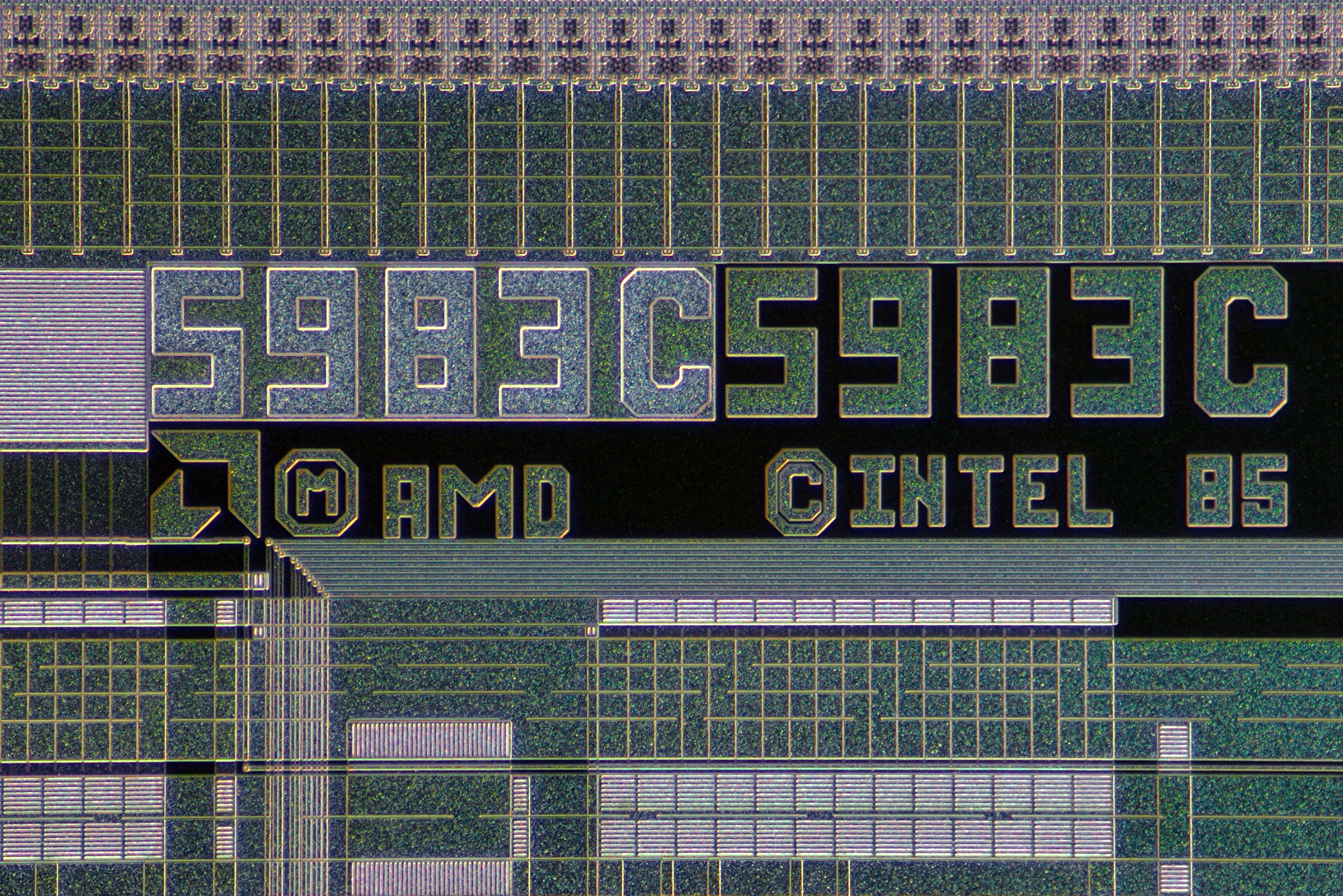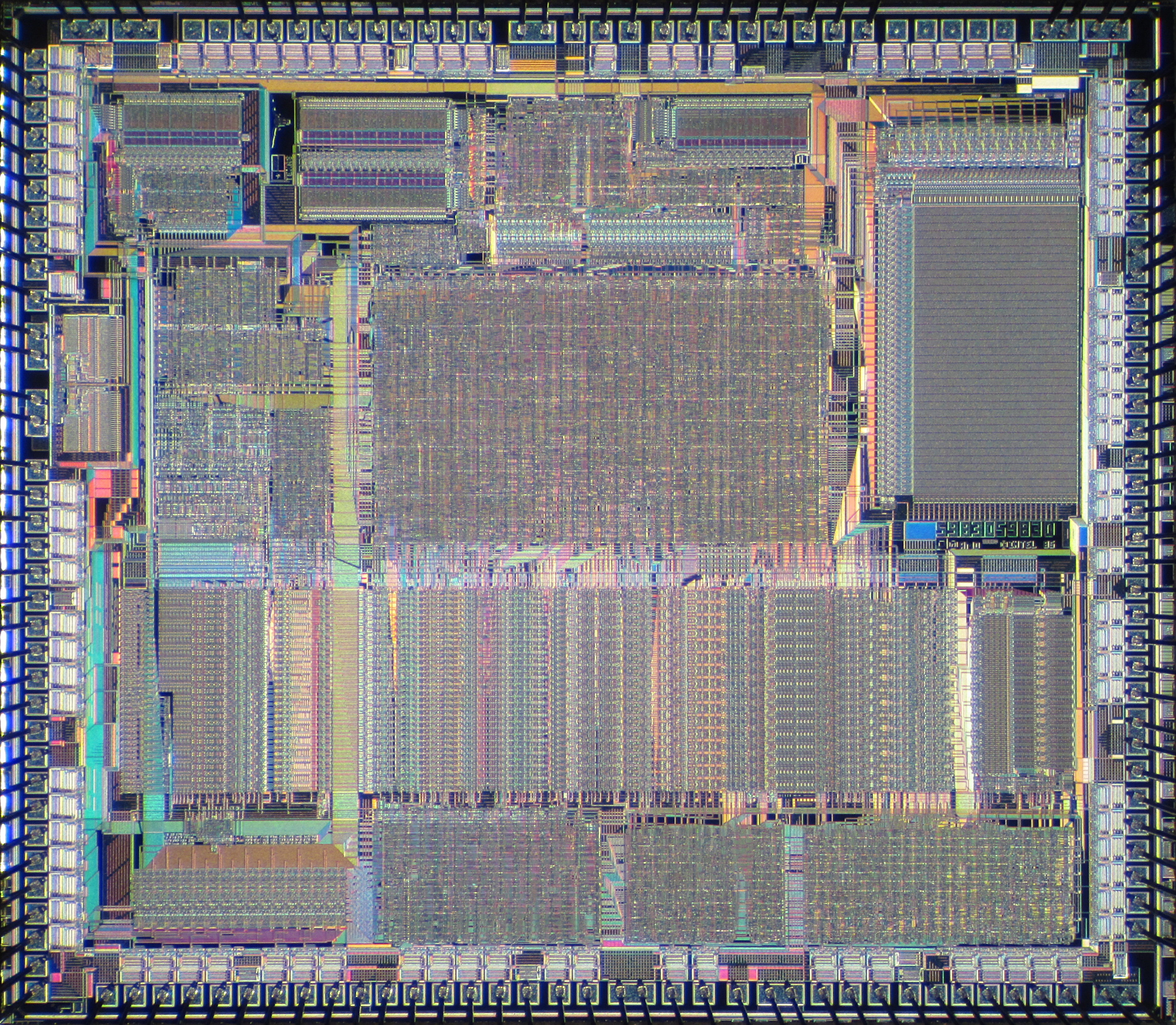Am386 on:
[Wikipedia]
[Google]
[Amazon]
The Am386

 While the AM386 CPU was essentially ready to be released prior to 1991, Intel kept it tied up in court. AMD had previously been a second-source manufacturer of Intel's
While the AM386 CPU was essentially ready to be released prior to 1991, Intel kept it tied up in court. AMD had previously been a second-source manufacturer of Intel's
File:KL AMD 386DX.jpg, An Am386DX-25
File:KL AMD Am386DE.jpg, The Am386DE-33 is an embedded version of the Am386DX-33
File:AMD Am386DX DXL.jpg, A PGA Am386DX-40
File:AMD Am386 DX-40 2007 03 27.jpg, A PQFP Am386DX-40 on a 132-pin PGA adapter
File:AMD Am386DE Block Diagram.tif, AMD Am386DE Block Diagram There is not a Paging Unit like a DX CPU
File:Early Nineties 386DX-40.png, A scan of an AMD Am386™DX-40 mounted on a PGA adapter.
File:Am386SXL-25cropped.jpg, An Am386SX-25
File:KL AMD 386SX.jpg, An Am386SX-33
File:Ic-photo-AMD--Am386SX-40--(NG80386SX-40)--(386-CPU).png, An Am386SX-40
File:KL IIT 3C87SX.jpg, An IIT 387SX-25 Coprocessor
File:FasMath.jpg, A Cyrix FasMath 387DX-33 Coprocessor
File:KL ULSI US83S87SX SLC.jpg, An ULSI 387SX-40 Coprocessor
AMD.com: Am386 Family 32-bit Processors
AMD Am386SX/SXL/SXLV Datasheet
cpu-collection.de: Pictures
*
AMD Am386 Microprocessors for Personal Computers Datasheet 15021 and 15022
{{AMD_processors Am386
CPU
A central processing unit (CPU), also called a central processor, main processor or just processor, is the electronic circuitry that executes instructions comprising a computer program. The CPU performs basic arithmetic, logic, controlling, and ...
is a 100%-compatible clone of the Intel 80386 design released by AMD in March 1991. It sold millions of units, positioning AMD as a legitimate competitor to Intel, rather than being merely a second source for '' x86'' CPUs (then termed '' 8086-family'').
Features
CPU features tableHistory and design

Intel 8086
The 8086 (also called iAPX 86) is a 16-bit microprocessor chip designed by Intel between early 1976 and June 8, 1978, when it was released. The Intel 8088, released July 1, 1979, is a slightly modified chip with an external 8-bit data bus (allowi ...
, Intel 80186
The Intel 80186, also known as the iAPX 186, or just 186, is a microprocessor and microcontroller introduced in 1982. It was based on the Intel 8086 and, like it, had a 16-bit external data bus multiplexed with a 20-bit address bus. The 801 ...
and Intel 80286 designs, and AMD's interpretation of the contract, made up in 1982, was that it covered all derivatives of them. Intel, however, claimed that the contract only covered the 80286 and prior processors and forbade AMD the right to manufacture 80386 CPUs in 1987. After a few years in the courtrooms, AMD finally won the case and the right to sell their Am386 in March 1991. This also paved the way for competition in the 80386
The Intel 386, originally released as 80386 and later renamed i386, is a 32-bit microprocessor introduced in 1985. The first versions had 275,000 transistors32-bit
In computer architecture, 32-bit computing refers to computer systems with a processor, memory, and other major system components that operate on data in 32-bit units. Compared to smaller bit widths, 32-bit computers can perform large calculation ...
CPU market and so lowered the cost of owning a PC.
While Intel's 386 CPUs had topped out at 33 MHz in 1989, AMD introduced 40 MHz versions of both its 386DX and 386SX out of the gate, extending the lifespan of the architecture. In the following two years the AMD 386DX-40 saw popularity with small manufacturers of PC clones and with budget-minded computer enthusiasts because it offered near-80486
The Intel 486, officially named i486 and also known as 80486, is a microprocessor. It is a higher-performance follow-up to the Intel 386. The i486 was introduced in 1989. It represents the fourth generation of binary compatible CPUs following the ...
performance at a much lower price than an actual 486. Generally the 386DX-40 performs nearly on par with a 25 MHz 486 due to the 486 needing fewer clock cycles per instruction, thanks to its tighter pipelining (more overlapping of internal processing) in combination with an on-chip CPU cache. However, its 32-bit
In computer architecture, 32-bit computing refers to computer systems with a processor, memory, and other major system components that operate on data in 32-bit units. Compared to smaller bit widths, 32-bit computers can perform large calculation ...
40 MHz data bus gave the 386DX-40 comparatively good memory and I/O performance.
Am386DX data
* 32-bit data bus, can select between either a 32-bit bus or a 16-bit bus by use of the BS16 input * 32-bit physical address space, 4 Gbyte physical memory address space * fetches code in four-byte units * released in March 1991Am386DE data
* 32-bit data bus, can select between either a 32-bit bus or a 16-bit bus by use of the BS16 input * 32-bit physical address space, 4 Gbyte physical memory address space * fetches code in four-byte units * no paging unitAM386 SX
In 1991 AMD also introduced advanced versions of the 386SX processor - again not as a second source production of the Intel chip, but as a reverse engineered pin compatible version. In fact, it was AMD's first entry in the x86 market other than as a second source for Intel. AMD 386SX processors were available at faster clock speeds at the time they were introduced and still cheaper than the Intel 386SX. Produced in 0.8 μm technology and using a static core, their clock speed could be dropped down to 0 MHz, consuming just some mWatts. Power consumption was up to 35% lower than with Intel's design and even lower than the 386SL's, making the AMD 386SX the ideal chip for both desktop and mobile computers. The SXL versions featured advanced power management functions and used even less power.Am386SX data
* 16-bit data bus, no bus sizing option * 24-bit physical address space, 16 Mbyte physical memory address space * prefetch unit reads two bytes as one unit (like the 80286).80387 coprocessor
Floating point performance of the Am386 could be boosted with the addition of a 80387DX or 80387SXcoprocessor
A coprocessor is a computer processor used to supplement the functions of the primary processor (the CPU). Operations performed by the coprocessor may be floating-point arithmetic, graphics, signal processing, string processing, cryptography o ...
, although performance would still not approach that of the on-chip FPU FPU may stand for:
Universities
* Florida Polytechnic University, in Lakeland, Florida, United States
* Franklin Pierce University, in New Hampshire, United States
* Fresno Pacific University, in California, United States
* Fukui Prefectural Univ ...
of the 486DX. This made the Am386DX a suboptimal choice for scientific applications and CAD using floating point intensive calculations. However, both were niche markets in the early 1990s and the chip sold well, first as a mid-range contender, and then as a budget chip. Although motherboard
A motherboard (also called mainboard, main circuit board, mb, mboard, backplane board, base board, system board, logic board (only in Apple computers) or mobo) is the main printed circuit board (PCB) in general-purpose computers and other expand ...
s using the older 386 CPUs often had limited memory expansion possibilities and therefore struggled under Windows 95's memory requirements, boards using the Am386 were sold well into the mid-1990s; at the end as budget motherboards for those who were only interested in running MS-DOS or Windows 3.1x applications.
The Am386 and its low-power successors were also popular choices for embedded systems, for a much longer period than their life span as PC processors.
References
External links
AMD.com: Am386 Family 32-bit Processors
AMD Am386SX/SXL/SXLV Datasheet
cpu-collection.de: Pictures
*
AMD Am386 Microprocessors for Personal Computers Datasheet 15021 and 15022
{{AMD_processors Am386